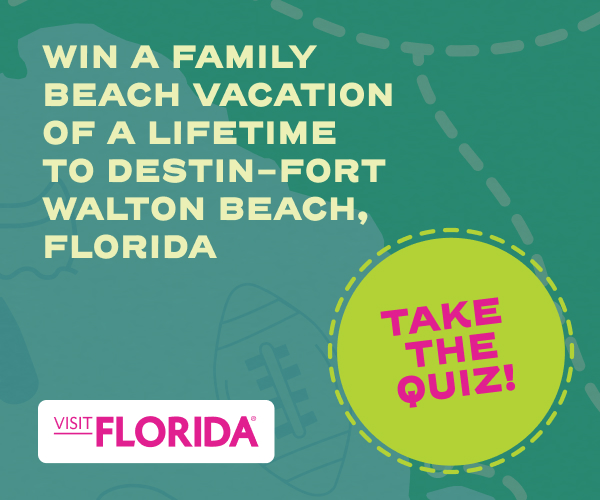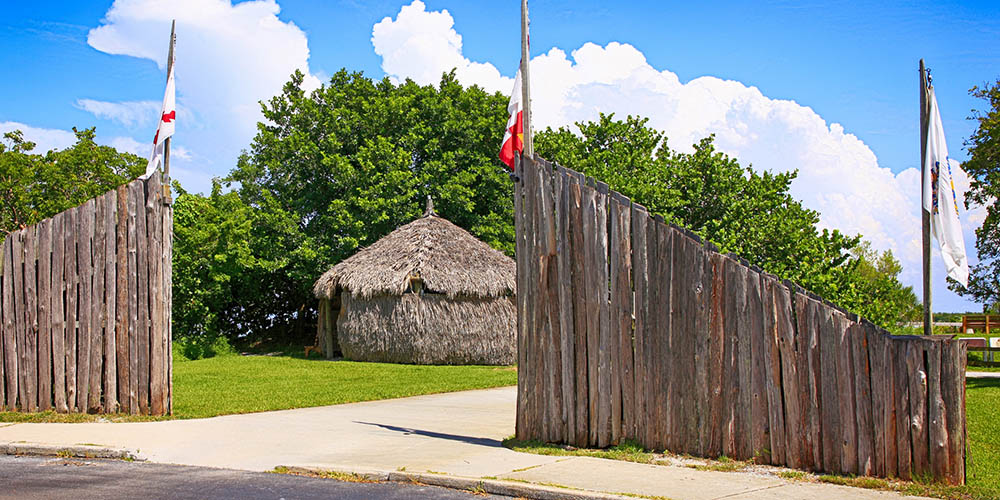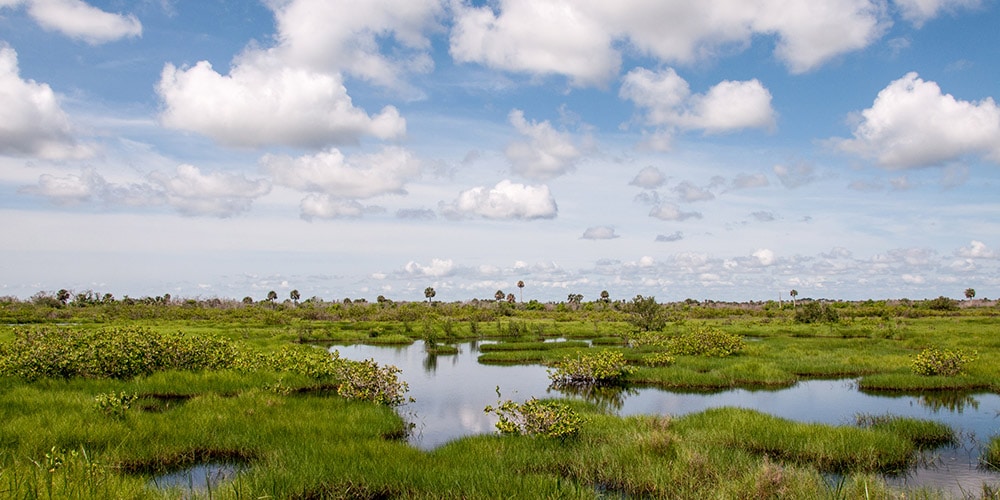Spring, summer, fall, winter, there is never a bad time to visit Florida national parks. Take a look at the top seven for sunny family fun, even if it’s freezing where you are at the moment.
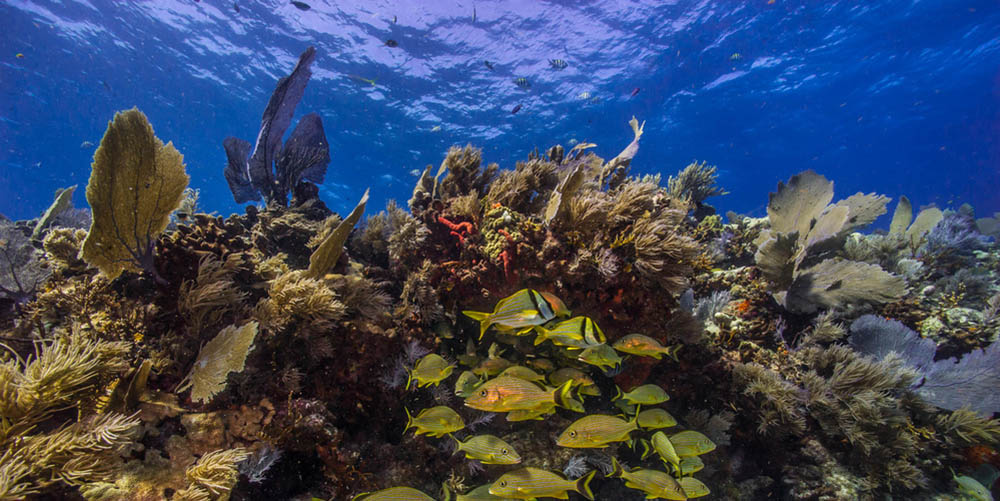
Biscayne National Park, Florida
Biscayne National Park: closest national park to Miami
Within sight of downtown Miami yet worlds away, Biscayne National Park protects a rare combination of aquamarine waters, emerald islands and fish-bejeweled coral reefs.
Here, too, is evidence of human history spanning centuries, from pirates and shipwrecks to pineapple farmers and presidents. Outdoor enthusiasts can canoe through mangrove forests, snorkel among 500 species of reef fish, camp, watch wildlife or simply relax in a rocking chair gazing out over the bay. And a road built during the 1960s, now the park’s lone hiking trail, passes through a tropical hardwood forest.
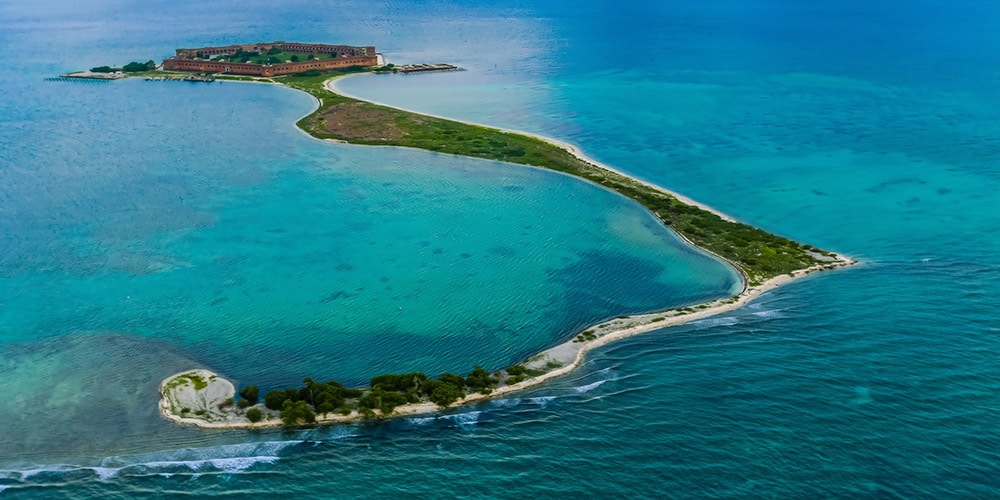
Dry Tortugas National Park, Florida
Dry Tortugas: the most remote of Florida national parks
In the 19th century, some Americans were imprisoned in Fort Jefferson on what’s now Dry Tortugas National Park: a small group of islands almost 70 miles west of Key West. One prisoner declared it “the most horrible place the eye of man ever rested upon.” But today’s visitors consider it a slice of heaven on earth, with crystal-clear waters and few crowds.
The most remote of Florida national parks, Dry Tortugas is accessible only by boat or seaplane.
Families can take the two-hour ferry from Key West to spend the day exploring historic Fort Jefferson, snorkeling in the coral reefs and watching the vast assortment of bird life. Encourage the kids to keep an eye out for turtles and dolphins. Go for a virtual visit to Dry Tortugas today.

Paddling, Everglades, Florida national parks
Everglades: the most famous of Florida national parks
The largest subtropical wilderness in the US, the Everglades consists of 1.5 million acres of wetlands in South Florida. The landscape is unparalleled, providing important habitats for numerous rare and endangered species such as the manatee, American crocodile and the elusive Florida panther.
Everglades National Park has three entrances that are accessed through different areas of South Florida. Inside the park, families can take a short walk on the Anhinga Trail to spot abundant wildlife like turtles, herons and alligators. Then climb atop Shark Valley’s 65-foot observation tower for a bird’s-eye view of the Glades or glide over Florida Bay by tour boat or kayak for a chance to glimpse a crocodile, manatee and dolphin.
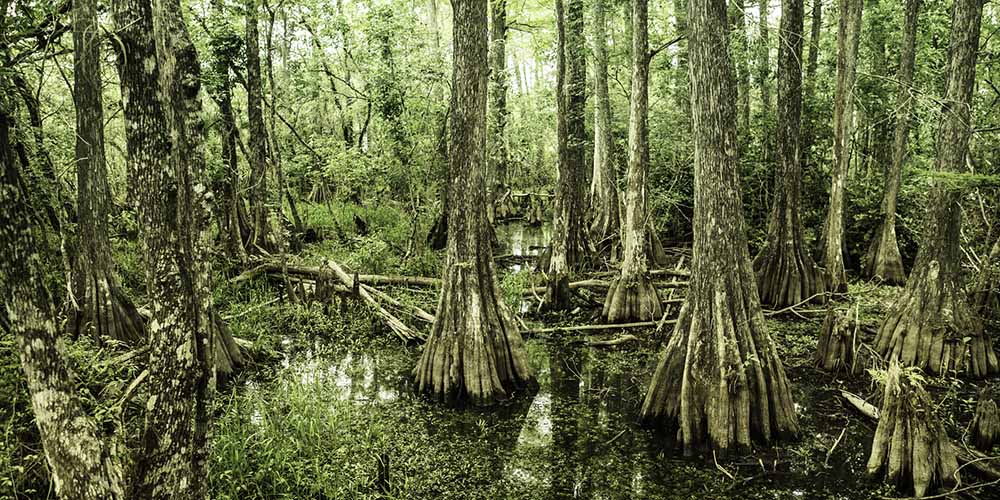
Mysterious Big Cypress National Preserve, Florida national parks
Big Cypress National Preserve: an accessible eco-wonder
Next door to the Everglades, Big Cypress National Preserve is a 729,000-acre swamp once slated to become the world’s largest jetport until a 1972 coalition of hunters and conservationists saved it.
The preserve’s fresh waters are an essential part of the region’s ecosystem. With hundreds of miles of multi-use trails, you’ll find opportunities for birdwatching, wildlife viewing, discovering the natural world, or simply gazing across the horizon.
There’s even a Big Cypress movie ‘Mud Lake Mosaic‘ to watch before you go.



